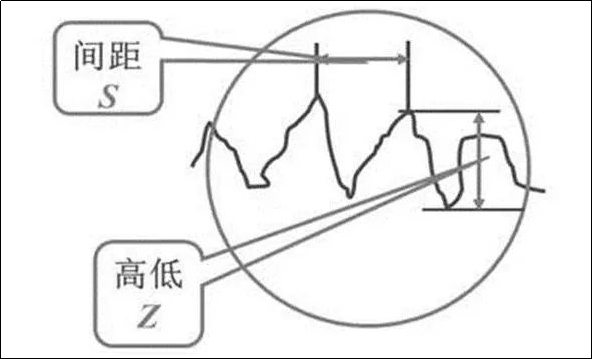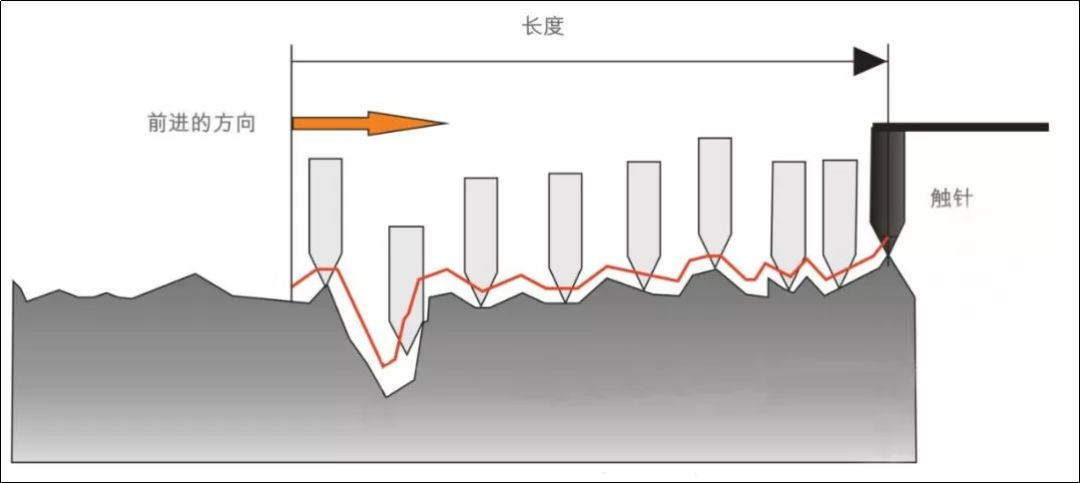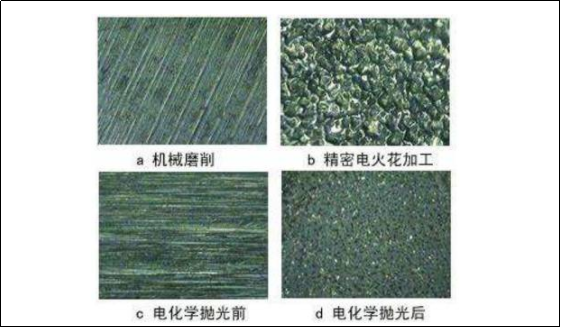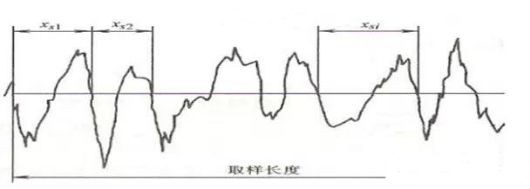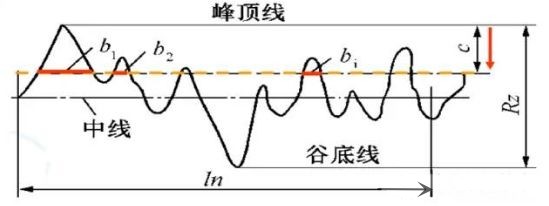1. The concept of metal surface roughness
Surface roughness refers to the unevenness of small pitches and tiny peaks and valleys that a machined surface has. The distance (wave distance) between the two peaks or two troughs is very small (below 1mm), which belongs to the microscopic geometric shape error.
Specifically, it refers to the degree of height and distance S of tiny peaks and valleys. Generally divided by S:
-
S<1mm is the surface roughness;
- 1≤S≤10mm is waviness;
- S>10mm is f shape.
2. VDI3400, Ra, Rmax comparison table
The national standard stipulates that three indicators are commonly used to evaluate the surface roughness (unit is μm): the average arithmetic deviation Ra of the profile, the average height Rz of the unevenness and the maximum height Ry. The Ra index is often used in actual production. The maximum micro-height deviation Ry of the profile is often expressed by the Rmax symbol in Japan and other countries, and the VDI index is commonly used in Europe and the United States. Below is the VDI3400, Ra, Rmax comparison table.
VDI3400, Ra, Rmax comparison table
|
|
|
|
|
|
|
|
|
|
|
|
|
|
|
|
|
|
|
|
|
|
|
|
|
|
|
|
|
|
|
|
|
|
|
|
|
|
|
|
|
|
|
|
|
|
|
|
3. Surface roughness formation factors
Surface roughness is generally formed by the processing method used and other factors, such as the friction between the tool and the surface of the cnc machining part during processing, the plastic deformation of the surface layer metal when the chip is separated, and the high frequency vibration in the process system, electrical machining discharge pits, etc. Due to the different processing methods and workpiece materials, the depth, density, shape and texture of the traces left on the processed surface are different.
4. The main manifestations of the influence of surface roughness on parts
1) Affect wear resistance. The rougher the surface, the smaller the effective contact area between the mating surfaces, the greater the pressure, the greater the frictional resistance, and the faster the wear.
2) Affect the stability of the fit. For clearance fit, the rougher the surface, the easier it is to wear, so that the gap gradually increases during the working process; connection strength.
3) Affect the fatigue strength. There are large troughs on the surface of rough parts, which are sensitive to stress concentration like sharp notches and cracks, thus affecting the fatigue strength of precision parts.
4) Affect corrosion resistance. Rough parts surface can easily cause corrosive gas or liquid to penetrate into the inner layer of the metal through the microscopic valleys on the surface, causing surface corrosion.
5) Affect the tightness. Rough surfaces cannot fit tightly, and gas or liquid leaks through the gaps between the contact surfaces.
6) Affects contact stiffness. Contact stiffness is the ability of the joint surface of parts to resist contact deformation under the action of external force. The stiffness of a machine is largely determined by the stiffness of the contact between the cnc lathe parts.
7) Affect the measurement accuracy. The surface roughness of the measured surface of the part and the measuring surface of the measuring tool will directly affect the accuracy of the measurement, especially in precision measurement.
In addition, surface roughness will have varying degrees of influence on the plating coating, thermal conductivity and contact resistance, reflection and radiation performance of parts, resistance to liquid and gas flow, and current flow on the surface of conductors.
5. surface roughness evaluation basis
1. Sampling length
The sampling length is the length of a reference line specified in the assessment of surface roughness. According to the formation and texture characteristics of the actual surface of the part, the length that can reflect the surface roughness characteristics should be selected, and the sampling length should be measured according to the general trend of the actual surface contour. The purpose of specifying and selecting the sampling length is to limit and weaken the influence of surface waviness and shape errors on the measurement results of surface roughness.
2. Evaluation length
The evaluation length is a length necessary for evaluating the profile, and it may include one or several sampling lengths. Since the surface roughness of each part of the surface of the part is not necessarily uniform, a certain surface roughness feature cannot be reasonably reflected in one sampling length, so it is necessary to take several sampling lengths on the surface to evaluate the surface roughness. The evaluation length generally consists of 5 sampling lengths.
3. Baseline
The reference line is the center line of the profile used to evaluate the surface roughness parameters. There are two types of reference lines: the least square median line of the contour: within the sampling length, the sum of the squares of the contour offset distances of each point on the contour line is the smallest, and it has a geometric contour shape. The arithmetic mean midline of the contour: within the sampling length, the areas of the contours above and below the midline are equal. Theoretically, the least-squares median line is an ideal baseline, but it is difficult to obtain in practical applications, so it is generally replaced by the arithmetic mean median line of the contour, and a straight line with an approximate position can be used to replace it during measurement.
6. Surface roughness evaluation parameters
1. Height characteristic parameters
Ra profile arithmetic mean deviation: the arithmetic mean of the absolute value of the profile deviation within the sampling length (lr). In actual measurement, the more the number of measurement points, the more accurate Ra is.
Rz profile maximum height: the distance between the profile peak line and valley bottom line.
Ra is preferred in the usual range of amplitude parameters. In the national standard before 2006, there was another evaluation parameter that was “the ten-point height of micro-roughness” expressed by Rz, and the maximum height of the contour was expressed by Ry. After 2006, the national standard canceled the ten-point height of micro-roughness, and Rz was used. Indicates the maximum height of the profile.
2. Spacing feature parameters
Rsm Average width of contour elements. Within the sampling length, the average value of the distance between the microscopic irregularities of the profile. The micro-roughness spacing refers to the length of the profile peak and the adjacent profile valley on the center line. In the case of the same Ra value, the Rsm value is not necessarily the same, so the reflected texture will be different. Surfaces that pay attention to texture usually pay attention to the two indicators of Ra and Rsm.
The Rmr shape feature parameter is represented by the contour support length ratio, which is the ratio of the contour support length to the sampling length. The profile support length is the sum of the lengths of the section lines obtained by intersecting the profile with a straight line parallel to the midline and a distance of c from the profile peak line within the sampling length.
7. Surface roughness measurement method
1. Comparative method
It is used for on-site measurement in the workshop, and is often used for the measurement of medium or rough surfaces. The method is to compare the measured surface with a roughness sample marked with a certain value to determine the value of the measured surface roughness.
2. Stylus method
The surface roughness uses a diamond stylus with a tip curvature radius of about 2 microns to slide slowly along the measured surface. The up and down displacement of the diamond stylus is converted into an electrical signal by an electrical length sensor, and is indicated by a display instrument after amplification, filtering, and calculation. The surface roughness value can be obtained, and the recorder can also be used to record the profile curve of the measured section. Generally, the measurement tool that can only display the surface roughness value is called a surface roughness measuring instrument, and the one that can record the surface profile curve is called a surface roughness profiler. These two measurement tools have electronic calculation circuits or electronic computers, which can automatically calculate the arithmetic mean deviation Ra of the contour, the ten-point height Rz of the microscopic unevenness, the maximum height Ry of the contour and other evaluation parameters, with high measurement efficiency and suitable for The surface roughness of Ra is 0.025-6.3 microns is measured.
Anebon’s eternal pursuits are the attitude of “regard the market, regard the custom, regard the science” and the theory of “quality the basic, trust the first and management the advanced” for Hot sale Factory OEM Service High Precision CNC Machining parts for automation industrial, Anebon quote for your inquiry. For more information, please get in touch with us, Anebon will reply you ASAP!
Hot sale Factory China 5 axis cnc machining parts, CNC turned parts and milling copper part. Welcome to visit our company, factory and our showroom where displays various hair merchandise that will meet your expectation. Meanwhile, it is convenient to visit Anebon’s website, and Anebon sales staff will try their best to deliver you the best service. Please contact Anebon if you have to have more information. Aim of Anebon is to help customers realize their goals. Anebon have been making great efforts to achieve this win-win situation.
Post time: Mar-25-2023

